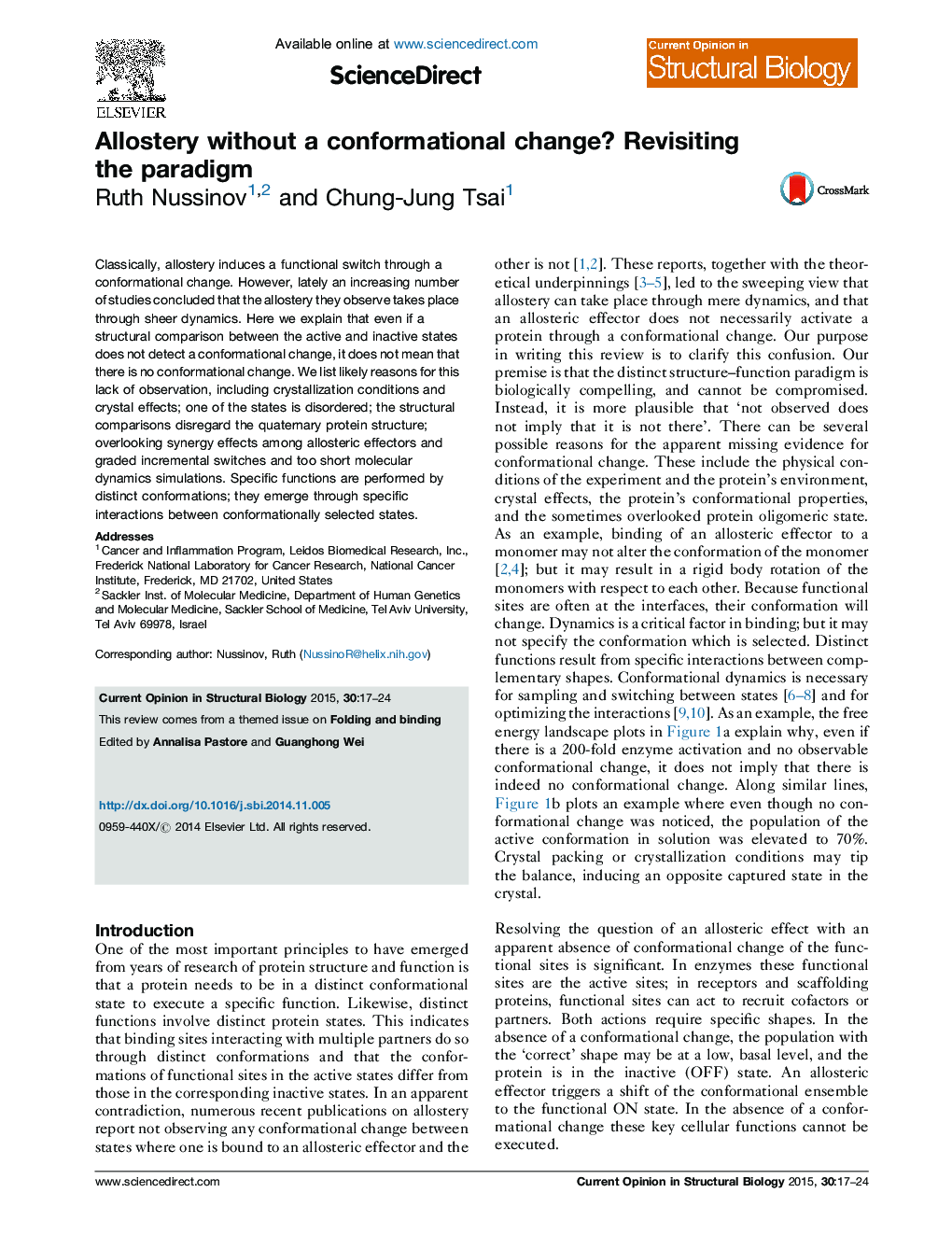| Article ID | Journal | Published Year | Pages | File Type |
|---|---|---|---|---|
| 8319973 | Current Opinion in Structural Biology | 2015 | 8 Pages |
Abstract
Classically, allostery induces a functional switch through a conformational change. However, lately an increasing number of studies concluded that the allostery they observe takes place through sheer dynamics. Here we explain that even if a structural comparison between the active and inactive states does not detect a conformational change, it does not mean that there is no conformational change. We list likely reasons for this lack of observation, including crystallization conditions and crystal effects; one of the states is disordered; the structural comparisons disregard the quaternary protein structure; overlooking synergy effects among allosteric effectors and graded incremental switches and too short molecular dynamics simulations. Specific functions are performed by distinct conformations; they emerge through specific interactions between conformationally selected states.
Related Topics
Life Sciences
Biochemistry, Genetics and Molecular Biology
Biochemistry
Authors
Ruth Nussinov, Chung-Jung Tsai,
